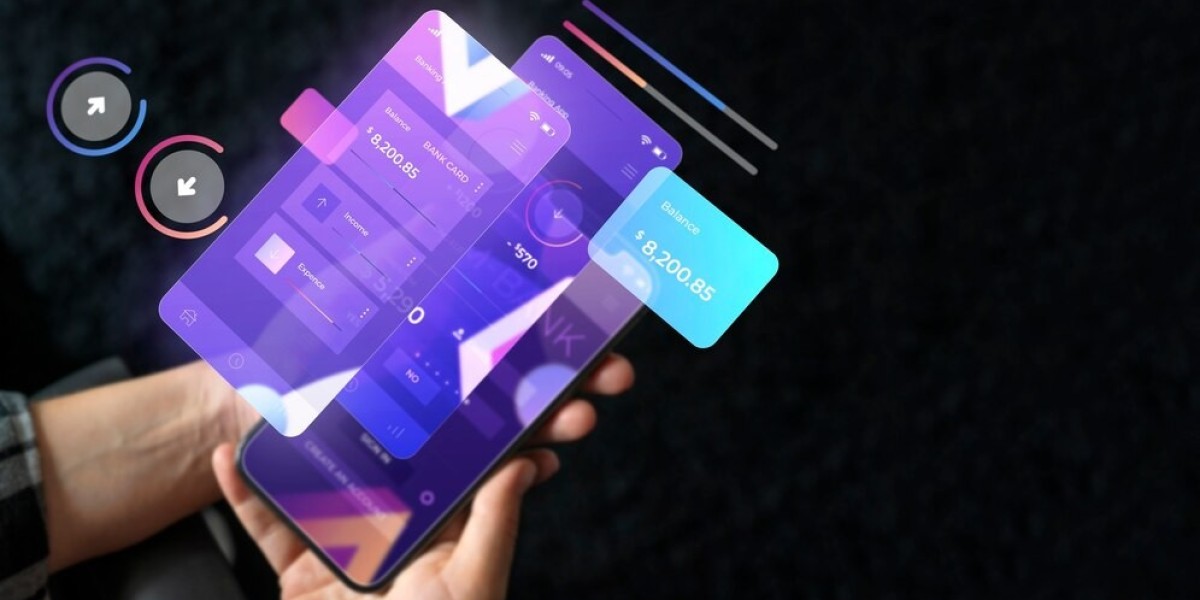In the fast-paced world of technology, where trends shift overnight and user expectations continually evolve, creating an Android app is just the beginning. The real challenge lies in future-proofing it—ensuring it remains relevant, secure, scalable, and functional for the years to come. With mobile usage predicted to rise even more dramatically, businesses must think beyond the now. If you are planning to develop a lasting app, working with an experienced android application development company like Pixel Genesys can set the foundation for long-term success.
In this comprehensive blog post, we’ll walk you through everything you need to know to future-proof your Android application for the next decade. From architectural decisions to embracing emerging technologies, we will explore strategies that developers, entrepreneurs, and businesses must adopt in 2025 and beyond.
1. Embrace a Scalable Architecture
One of the core tenets of a future-ready Android app is its architecture. A poorly structured application will be difficult to scale, prone to bugs, and will limit feature enhancement down the line.
Adopt MVVM or MVI
Model-View-ViewModel (MVVM) or Model-View-Intent (MVI) are modern, clean architectural patterns that enhance testability and maintainability. MVVM, in particular, separates UI logic from business logic, making updates easier.
Use Modular Codebase
Break your application into independent modules. This separation allows teams to work on specific features without disrupting the entire codebase—a strategy widely used by top mobile application development companies.
2. Prioritize Backward and Forward Compatibility
With Android releasing frequent OS updates and OEMs modifying user interfaces, compatibility becomes a pressing issue.
Minimum SDK Version Strategy
Always define a sensible minSdkVersion. Supporting very old versions can make your code bloated, while newer versions improve performance and reduce development complexity.
Use Jetpack Libraries
Google’s Jetpack libraries ensure your app works seamlessly across different Android versions. These components are updated independently and adapt to platform changes automatically.
3. Regular Security Updates
Security threats evolve as technology advances. If your Android app handles sensitive data—user login, payment, health, etc.—then implementing robust security is non-negotiable.
Adopt Secure Coding Practices
Avoid hardcoding sensitive information and use encrypted shared preferences, SSL pinning, and biometric authentication wherever applicable.
Integrate Security Testing in CI/CD
Use tools like SonarQube, OWASP ZAP, or Firebase App Check to ensure every update is scanned for vulnerabilities.
Pixel Genesys, a cutting-edge android application development company, integrates proactive security protocols as a fundamental part of their development lifecycle.
4. Invest in Performance Optimization
A laggy app will be uninstalled no matter how many features it has. Google's Play Store algorithms also favor well-performing apps.
Optimize for Battery & Network Usage
Implement WorkManager and JobScheduler APIs to defer tasks and avoid draining the battery. Reduce background data consumption, compress images, and cache effectively.
Use Profiling Tools
Android Studio offers CPU, memory, and network profiling tools. Make performance audits a regular part of your QA cycle.
5. Design for Flexibility & Foldable Devices
Design trends change rapidly, and with the introduction of foldables and wearables, adaptive UI is a must.
Responsive Design
Use ConstraintLayout and Jetpack Compose to make UI responsive and adaptive to new screen sizes and resolutions.
Support Multi-Window and Split-Screen
By allowing multitasking capabilities, your app becomes more usable on tablets and foldables—making it stand out in a competitive marketplace.
Forward-thinking companies like Pixel Genesys, a prominent mobile application development company, are already designing for foldable and flexible screens.
6. Future-Proof with Cross-Platform Technologies
The growing popularity of Flutter, React Native, and Kotlin Multiplatform offers a future-friendly approach for apps targeting multiple platforms.
Embrace Cross-Platform Solutions
By partnering with a cross platform app development company, you save time and cost while maintaining feature parity between Android and iOS. This makes it easier to adapt your app for future devices—AR glasses, smart TVs, or even in-car systems.
Pixel Genesys Approach
Pixel Genesys has successfully leveraged Flutter and Kotlin Multiplatform in several enterprise projects, reducing development overhead while maintaining native-like performance.
7. Incorporate AI and Machine Learning
The next decade will be dominated by AI-driven personalization, voice-based interfaces, and predictive analytics.
Android ML Kit Integration
Google’s ML Kit enables on-device intelligence, offering features like text recognition, barcode scanning, and face detection without cloud dependency.
Personalized User Experiences
Using AI, you can personalize content recommendations, push notifications, and app themes—leading to higher engagement and retention.
8. Build for Privacy-First World
With regulations like GDPR, CCPA, and Android’s increasing restrictions on permissions, privacy is a legal and ethical obligation.
Minimize Permissions
Request only the necessary permissions and provide a clear justification to the user on why they're needed.
Transparent Data Usage
Provide users with privacy dashboards and allow them to control their data.
Pixel Genesys ensures all its apps are compliant with major privacy laws, providing businesses peace of mind when launching globally.
9. Implement Robust Analytics and Monitoring
You can't future-proof what you can't measure. Integrating analytics tools helps you understand user behavior, track crashes, and make data-driven updates.
Must-Have Tools
Firebase Analytics for user insights
Crashlytics for real-time crash reports
Google Tag Manager for dynamic event tracking
Regular analysis of metrics like retention rate, DAU, and feature engagement helps steer the development roadmap in the right direction.
10. Continuous Integration and Deployment (CI/CD)
Manual deployments are a thing of the past. CI/CD pipelines enable faster, error-free releases and quick hotfixes.
Tools to Use
GitHub Actions
Bitrise
CircleCI
Firebase App Distribution
Pixel Genesys, being a modern android application development company, integrates CI/CD into every client project, ensuring a streamlined development-to-deployment lifecycle.
11. Offline-First Capabilities
With global audiences, network availability can't be guaranteed. Apps that work offline or with limited connectivity have a distinct advantage.
Strategies for Offline Support
Use Room Database for local storage
Implement data sync logic with WorkManager
Cache frequently accessed content intelligently
This is especially crucial for enterprise apps, education platforms, and health trackers.
12. Accessibility and Inclusivity
Future-ready apps are designed for everyone. Prioritize accessibility from day one to reach a broader audience.
Best Practices
Use
ContentDescriptionfor imagesEnsure color contrast for readability
Support screen readers and dynamic font resizing
The future is inclusive—and your app should be too.
13. Preparing for Future Tech: AR/VR, Blockchain, and IoT
Augmented Reality (AR)
With tools like ARCore, you can integrate immersive AR features directly into your Android app.
Blockchain Integration
For apps dealing with secure transactions, loyalty points, or contracts, blockchain offers future-proof transparency.
Internet of Things (IoT)
As smart homes and wearables grow, Android apps will increasingly need to communicate with external devices via Bluetooth, Wi-Fi, or NFC.
Pixel Genesys, with its forward-looking development practices, is already creating prototypes that integrate blockchain and AR seamlessly.
14. Focus on Community and Open Source
Building on open-source technologies and contributing back creates longevity for your app. Developers can fork, maintain, and update portions of your app even after years.
Use libraries with active GitHub communities
Avoid deprecated or unsupported packages
Encourage plugin-based architecture for community-driven innovation
15. Future-Proof Monetization Strategies
Ad networks and monetization policies are constantly changing. Ensure your app has flexible, ethical monetization options.
Diversify Revenue Streams
In-app purchases
Subscriptions
Affiliate integrations
Donations for open-source projects
Use modular monetization logic so it can be updated without a complete app overhaul.
Final Thoughts
Building an Android app is easy. Building one that survives the next 10 years? That’s a real challenge. By focusing on architecture, performance, security, and emerging tech—while collaborating with a visionary android application development company like Pixel Genesys—you can ensure that your investment today won’t become obsolete tomorrow.
Whether you’re a startup founder, CTO, or digital strategist, choosing the right mobile application development company or cross platform app development company can make or break your app’s longevity. At Pixel Genesys, we help you do more than just build an app—we help you build the future.
Ready to Future-Proof Your Android App?
Contact Pixel Genesys—your trusted android application development company—and let us help you create a solution that lasts a decade or more.





